Harvesting the popular crop can be backbreaking work and the rewards aren't always guaranteed for Bolivia's farmers.
Salinas de Garci Mendoza, Bolivia- Victor Choquetopa, the former mayor of the town of Salinas de Garci Mendoza, works tirelessly harvesting quinoa. It is a backbreaking routine that involves bending ripe stems and slashing at their exposed roots with sickles.
Located 15km from the world's largest salt flat and known as the "Capital of Quinoa", Salinas de Garci Mendoza is Bolivia's biggest producer of the superfood praised by Bolivian President Evo Morales as the "ancestral gift from the Andes to the world".
Between April and June, Victor will cut, dry, thresh, winnow and bag the quinoa that grows on his 400 hectares of land.
Then there is the task of finding an international buyer for the crop that has become Bolivia's most prized agricultural export.
Victor's wife, Rosa, works alongside him. In the row next to his, she examines the quinoa's bright pink panicles for pests and adjusts the brim of her hat.
Occasionally, she removes a plastic bag of coca leaves from her pocket, placing a small bundle into her right cheek. "This [is] so I don't feel tired," she explains.
Lucio, the hired hand for the day, abstains from chewing coca leaves. "Many religious people believe it is a sin," says Victor.
But for some, chewing coca leaves when working in the fields in the Bolivian Altiplano is as essential as having quinoa on the dinner table. While quinoa provides the much needed energy, coca leaves help combat fatigue from overwork and the intense sun.
A staple food in the diet of millions throughout the Andean states, quinoa has 36 percent more protein and 73 percent more fiber than wheat. Its protein content covers all eight essential amino acids and it has high levels of iron, magnesium and zinc, as well as B vitamins riboflavin and folic acid.
According to Food and Agriculture Organization Director-General Jose Graziano da Silva, quinoa could help "fight against hunger and food insecurity".
The UN declared 2013 the International Year of Quinoa. But four years on, Bolivian quinoa has suffered some setbacks.
Prices have fallen dramatically as new competitors, such as Peruvian farmers who, with the aid of synthetic fertilisers, produce two harvests a year instead of the one harvest in Bolivia, where synthetic fertilisers aren't used, enter the market.
In 2016, the department of Oruro, the region that produces 51 percent of all Bolivian quinoa destined for export and in which Salinas de Garci Mendoza is located, suffered a 20 percent decrease in production due to drought.
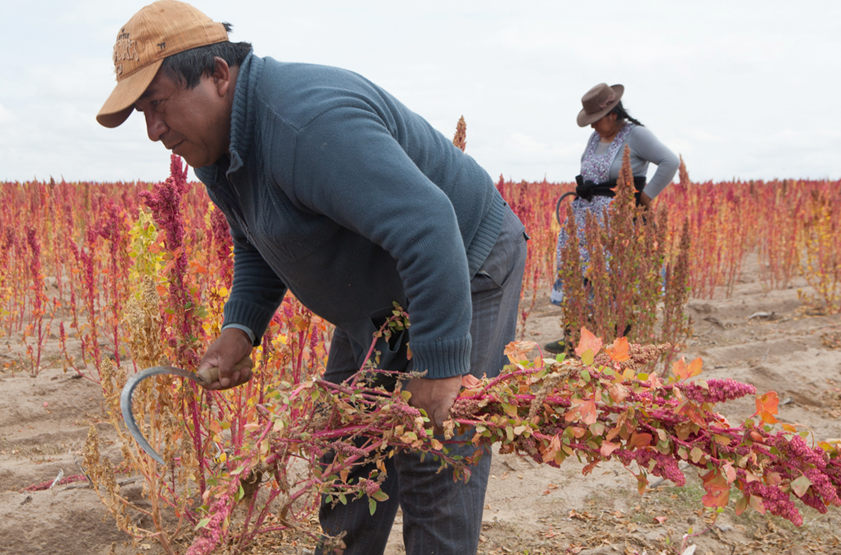
'We don't have time to think about resting, as the whole year we think about quinoa, our crop,' says 54-year-old Victor Choquetopa, who has worked his whole life as a quinoa farmer. [Marius Stankiewicz/Al Jazeera]
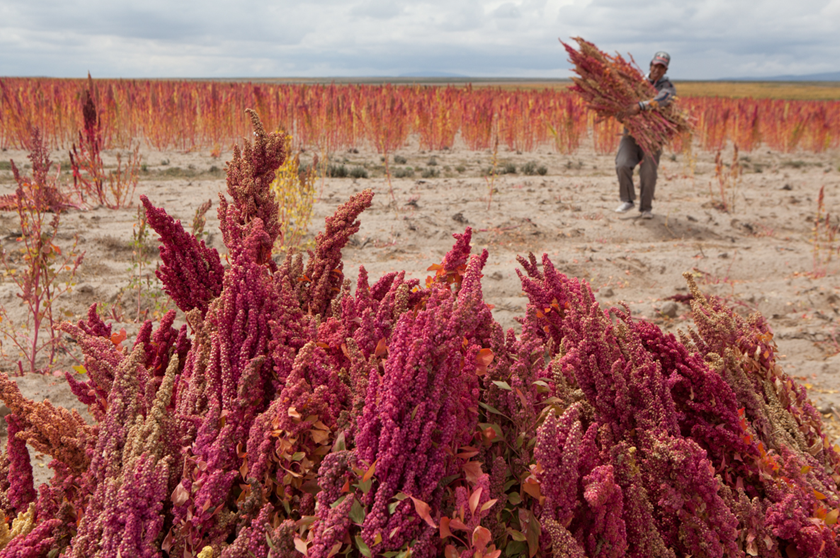
After they are cut, stalks of quinoa are then arranged in rows and stacked vertically in an interweaving pattern so as to withstand strong winds. This formation is called a chujlla, a Quechuan term for hut, but in this case, it refers to a bundle where the plants are heaped in order to dry. [Marius Stankiewicz/Al Jazeera]
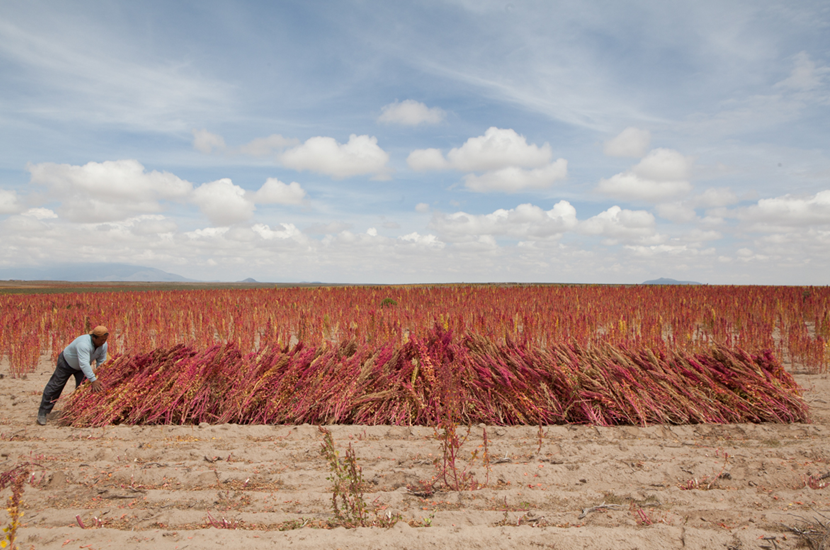
After three to four weeks of drying, Victor and Rosa will return to their plot of land in Marca Aroma and commence separating the grain from the panicle, in a process known as threshing. [Marius Stankiewicz/Al Jazeera]
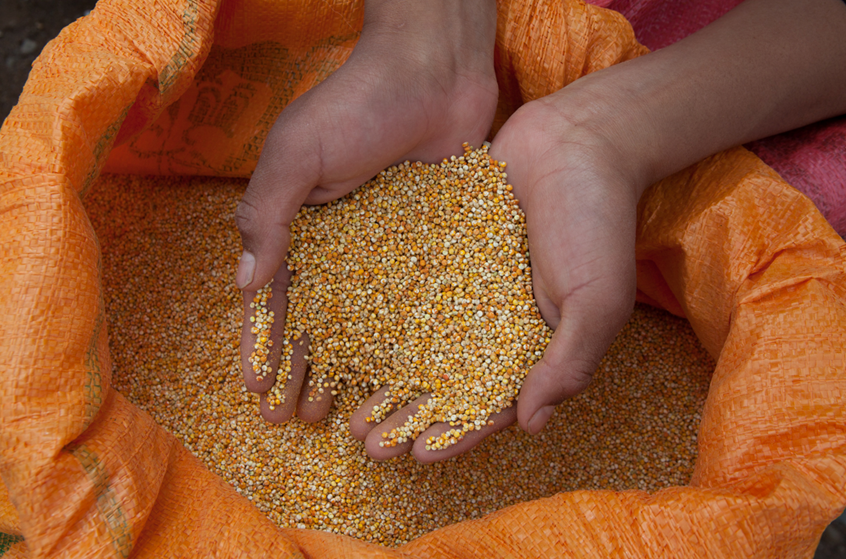
Quinoa has great genetic diversity, showing variation through colour, seeds and even protein content. In Bolivia, there are 22 varieties that have been obtained by interbreeding or selection. Here, a worker at Challapata's weekend quinoa market shows a handful of Quinoa Real, known as Grano de Oro or Grain of Gold. [Marius Stankiewicz/Al Jazeera]
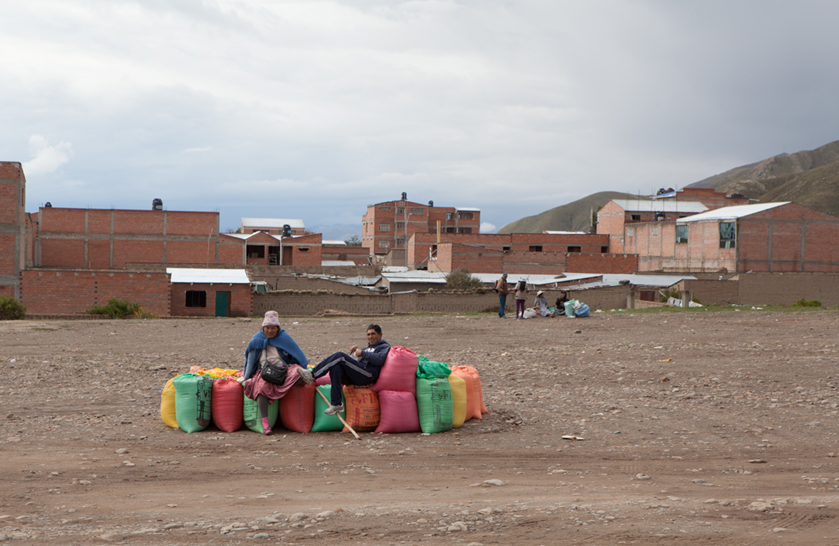
One quintal of quinoa (approximately 46 kilos) once fetched anywhere up to 2,500 Bolivian pesos (around $362) on the market. Nowadays, the hawkers who frequent Challapata's weekend quinoa market wrangle over 330 Bolivian pesos (about $48) per quintal. [Marius Stankiewicz/Al Jazeera]
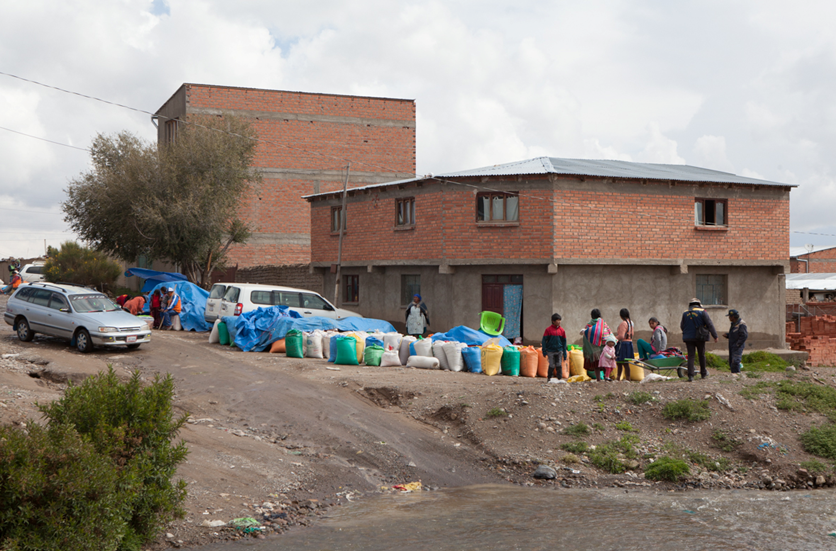
Although Bolivia and Peru once accounted for 92 percent of world quinoa production, countries such as France, England, Canada and Italy have started to grow the grain with high yields. [Marius Stankiewicz/Al Jazeera]
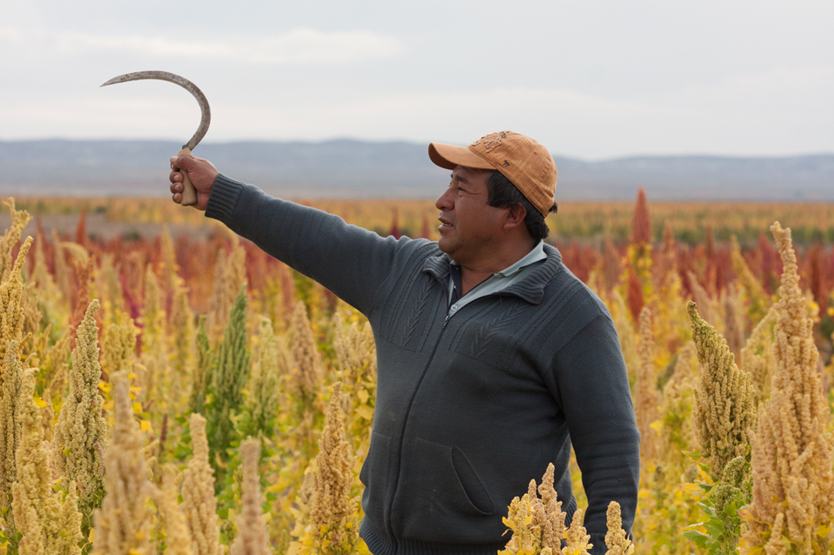
'Everything here is organic,' says Victor pointing to the part of his crop that was planted later than his other ripe batch. 'We even collect natural fertiliser and use the saponins as organic compost.' Quinoa Real's superior quality is said to be due to the salinity of the land, the high altitude, high levels of lithium, solar radiation and the clean water in the area. [Marius Stankiewicz/Al Jazeera]
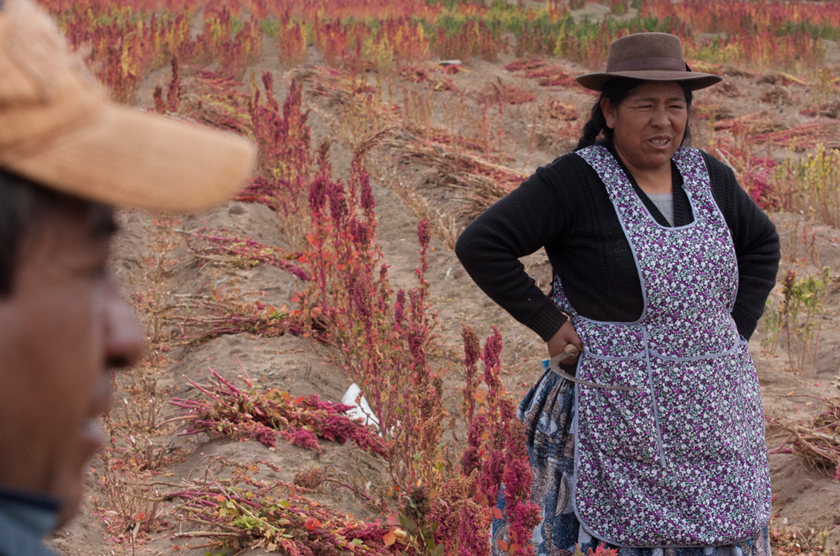
'In terms of quinoa, the women work the most,' says Victor. 'Apart from working in the fields, they also prepare and cook it at home.' [Marius Stankiewicz/Al Jazeera]
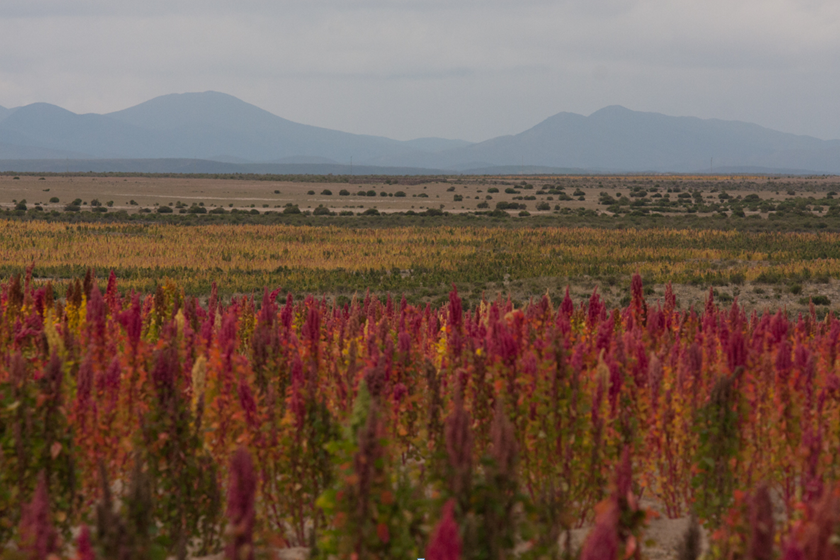
A cultural symbol of pre-Columbian civilisations, quinoa is said to have originated around Lake Titicaca as far back as 5,000 BCE. Its domestication helped the Tiahuanaco and Incan cultures to prosper, but it was soon marginalised after the Spanish conquest with the introduction of wheat and barley. [Marius Stankiewicz/Al Jazeera]
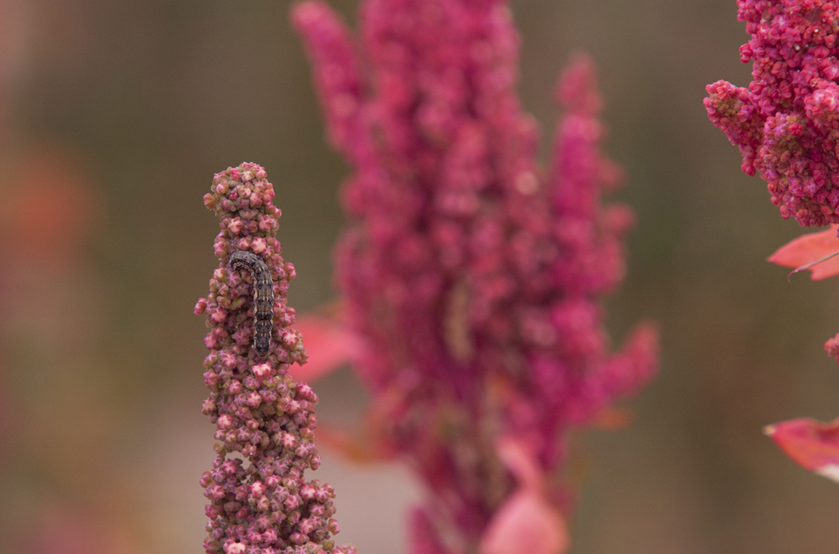
Droughts, freezes, contamination and soil salinity are not the only concerns of a quinoa farmer in the Bolivian Altiplano. At different stages throughout its growth, quinoa is at risk of being damaged by at least 17 different insect species. Moth larvae (seen here) are the most detrimental to crop growth followed by mildew, another serious threat that can reduce yields by 10 to 30 percent. [Marius Stankiewicz/Al Jazeera]
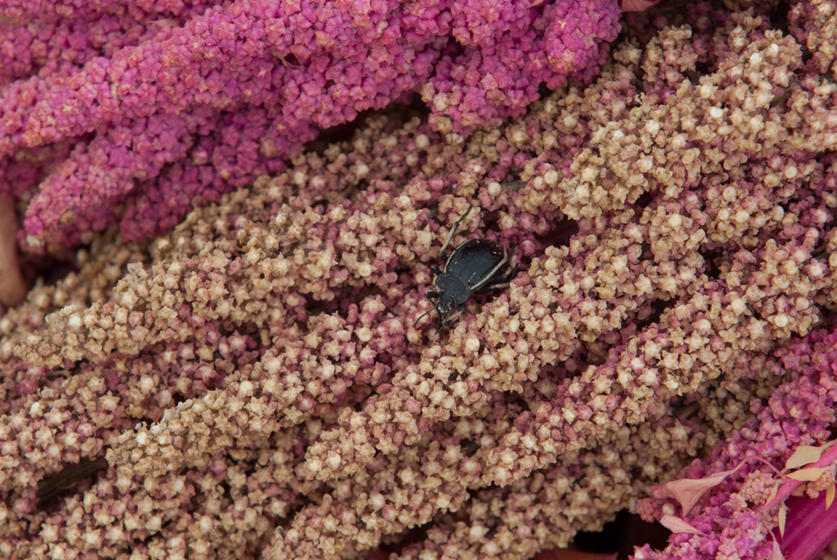
For its high nutritional value and adaptability to different climates, scientists believe quinoa can be the solution to desertification and land degradation caused by climate change. Its production is more eco-friendly compared to other grain crops, especially those with less protein but which are mass-produced. Quinoa also has the potential to reduce dependence on other staples like wheat and rice. [Marius Stankiewicz/Al Jazeera]


















